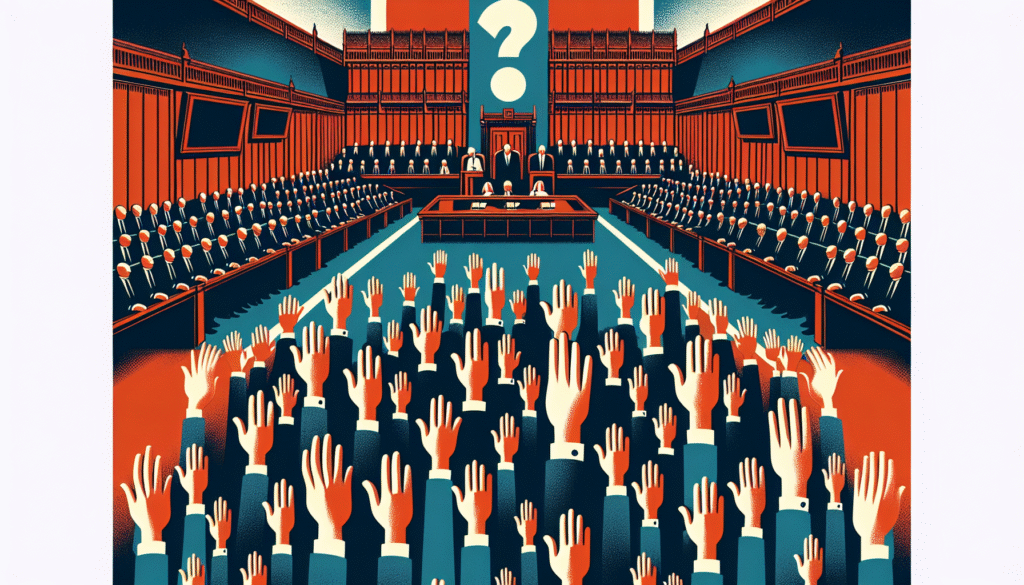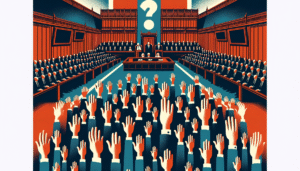
Government Faces No-Confidence Vote: A Deep Dive into Political Turmoil
What is a No-Confidence Vote?
A no-confidence vote is a parliamentary procedure used to test whether a government still holds the support of the legislature. It’s a fundamental mechanism in parliamentary democracies, enabling elected representatives to hold the executive branch accountable and potentially trigger its removal. The vote typically takes the form of a motion tabled by the opposition, declaring that the legislative body no longer has confidence in the current governing party or coalition. If the motion passes with a simple or absolute majority (depending on the country’s constitutional framework), the government is deemed to have lost the confidence of the parliament and is obliged to resign.
Triggers for a No-Confidence Vote:
Several factors can precipitate a no-confidence vote. A major policy failure, a significant scandal involving government officials, economic mismanagement, or simply a general decline in public and parliamentary support can all lead opposition parties to initiate this process. Sometimes, a no-confidence motion is used as a tactical maneuver to pressure the government into changing course on a particular policy, even if the opposition doesn’t necessarily expect to win the vote. It can be a powerful tool for highlighting perceived government inadequacies and rallying public opinion against the ruling party.
The Process of a No-Confidence Vote:
The specific procedure for a no-confidence vote varies between countries. Generally, a designated number of parliamentarians must formally propose the motion. After the motion is accepted, a debate ensues, offering both the government and the opposition the opportunity to present their arguments. This debate is a crucial part of the process, allowing for public scrutiny of the government’s performance and the reasons behind the no-confidence motion. Following the debate, a vote is held. The outcome determines the government’s fate.
Consequences of a Successful No-Confidence Vote:
If the no-confidence motion passes, the government is constitutionally obligated to resign. The head of state, usually a president or monarch, then has several options. They may call for the formation of a new government, often led by the opposition party that initiated the vote. Alternatively, they might dissolve parliament and call for a snap general election, allowing the electorate to directly decide which party should form the government. In some cases, a caretaker government is appointed to manage affairs until a new government is formed or elections are held.
Consequences of a Failed No-Confidence Vote:
If the no-confidence motion fails, the government retains its legitimacy and continues to govern. A failed vote can strengthen the government’s position, demonstrating its continued command of the legislative body. However, the political fallout can be complex. A narrow victory might still signal underlying dissatisfaction within the ruling party or coalition, potentially leading to internal dissent and instability.
No-Confidence Votes and Political Stability:
The existence of no-confidence votes plays a critical role in maintaining democratic accountability. It provides a mechanism for removing a government that has lost the support of the legislature, preventing potential abuses of power and ensuring that the government remains responsive to the will of the people. However, frequent no-confidence votes can also contribute to political instability, particularly in countries with fragmented party systems. Repeated changes in government can hinder long-term policy planning and economic development.
Recent Examples of No-Confidence Votes:
Several countries have witnessed no-confidence votes in recent years. These votes have varied significantly in their outcomes and subsequent impact. Some have resulted in the collapse of governments and snap elections, while others have reinforced the ruling party’s authority. Analyzing these cases offers valuable insights into the dynamics of parliamentary democracy and the complex interplay between executive and legislative branches.
The Role of Public Opinion:
Public opinion plays a significant role in the context of no-confidence votes. While the vote itself is confined to the legislature, public sentiment can influence the decisions of individual parliamentarians. Widespread public disapproval of the government can embolden opposition parties to call for a no-confidence vote and increase the likelihood of its success. Conversely, strong public support for the government can dissuade such motions and bolster the government’s chances of survival.
No-Confidence Votes and Coalition Governments:
Coalition governments, by their very nature, are often more vulnerable to no-confidence votes. Internal disagreements within the coalition can create opportunities for the opposition to exploit and potentially trigger a successful no-confidence motion. Maintaining cohesion and unity within a coalition is therefore crucial for its survival, particularly when facing a potential vote of no confidence.
The Future of No-Confidence Votes:
The no-confidence vote remains a vital instrument of democratic accountability. As political landscapes continue to evolve, it’s likely that the use and implications of no-confidence votes will adapt accordingly. The increasing influence of social media and the 24-hour news cycle may further amplify the impact of these votes, shaping public perception and influencing political outcomes. The continued study and analysis of no-confidence votes will be essential for understanding the changing dynamics of parliamentary democracy in the 21st century.















